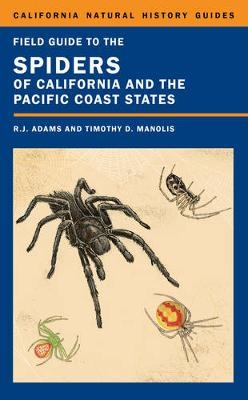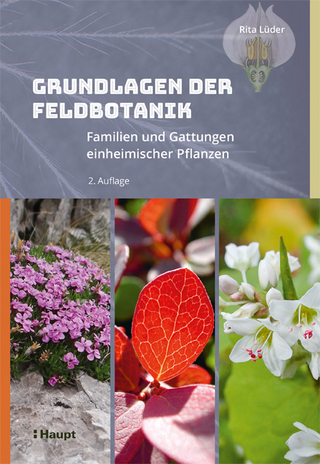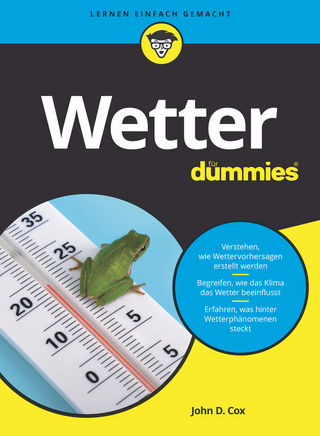
Field Guide to the Spiders of California and the Pacific Coast States
University of California Press (Verlag)
978-0-520-27661-1 (ISBN)
- Titel z.Zt. nicht lieferbar
- Versandkostenfrei innerhalb Deutschlands
- Auch auf Rechnung
- Verfügbarkeit in der Filiale vor Ort prüfen
- Artikel merken
R.J. Adams is a special education teacher and wildlife tour leader in Monterey, California. He has a BS in biology from Humboldt State University, California and an MS in biology emphasizing entomology and host-parasite coevolution from the University of Utah. Tim D. Manolis is an artist, illustrator, and biological consultant. From 1986 to 1990, he was the editor and art director of the magazine Mainstream. His papers on birds and his bird illustrations have appeared in many journals and magazines. He is the author of Dragonflies and Damselflies and illustrator of Butterflies of the San Francisco Bay and Sacramento Valley Regions.
Text Chapter 1. Introduction Chapter 2. Theraphosidae Chapter 3. Nemesiidae Chapter 4. Antrodiaetidae Chapter 5. Cyrtaucheniidae Chapter 6. Ctenizidae Chapter 7. Dipluridae Chapter 8. Mecicobothriidae Chapter 9. Hypochilidae Chapter 10. Filistatidae Chapter 11. Segestriidae Chapter 12. Caponiidae Chapter 13. Oonopidae Chapter 14. Dysderidae Chapter 15. Trogloraptoridae Chapter 16. Scytodidae Chapter 17. Sicariidae Chapter 18. Diguetidae Chapter 19. Plectreuridae Chapter 20. Pholcidae Chapter 21. Leptonetidae Chapter 22. Telemidae Chapter 23. Mysmenidae Chapter 24. Anapidae Chapter 25. Uloboridae Chapter 26. Oecobiidae Chapter 27. Mimetidae Chapter 28. Nesticidae Chapter 29. Theridiidae Chapter 30. Araneidae Chapter 31. Tetragnathidae Chapter 32. Pimoidae Chapter 33. Linyphiidae Chapter 34. Anyphaenidae Chapter 35. Miturgidae Chapter 36. Clubionidae Chapter 37. Corinnidae Chapter 38. Liocranidae Chapter 39. Prodidomidae Chapter 40. Gnaphosidae Chapter 41. Salticidae Chapter 42. Thomisidae Chapter 43. Philodromidae Chapter 44. Selenopidae Chapter 45. Sparassidae Chapter 46. Homalonychidae Chapter 47. Zoridae Chapter 48. Dictynidae Chapter 49. Cybaeidae Chapter 50. Hahniidae Chapter 51. Zodariidae Chapter 52. Tengellidae Chapter 53. Pisauridae Chapter 54. Zoropsidae Chapter 55. Oxyopidae Chapter 56. Lycosidae Chapter 57. Agelenidae Chapter 58. Amaurobiidae Chapter 59. Titanoecidae Chapter 60. Desidae Chapter 60. Amphinectidae Glossary References Plates Plate 1. Theraphosidae Plate 2. Nemesiidae, Antrodiaetidae Plate 3. Ctenizidae and Cyrtaucheniidae Plate 4. Cyrtaucheniidae cont., Mecicobothriidae, Dipluridae Plate 5. Hypochilidae, Filistatidae, Segestriidae Plate 6. Caponiidae and Oonopidae Plate 7. Dysderidae, Scytodidae, Trogloraptoridae, Sicariidae Plate 8. Plecturidae and Diguetidae Plate 9. Pholcidae (1 of 2) Plate 10. Pholcidae (2 of 2) Plate 11. Leptonetidae, Telemidae, Mysmenidae, Anapidae Plate 12. Uloboridae, Oecobiidae Plate 13. Mimetidae, Nesticidae Plate 14. Theridiidae (1 of 4) Plate 15. Theridiidae (2 of 4) Plate 16. Theridiidae (3 of 4) Plate 17. Theridiidae (4 of 4) Plate 18. Araneidae (1 of 5) Plate 19. Araneidae (2 of 5) Plate 20. Araneidae (3 of 5) Plate 21. Araneidae (4 of 5) Plate 23. Tetragnathidae (1 of 2) Plate 24. Tetragnathidae (2 of 2), Pimoidae Plate 25. Linyphiidae (1 of 2) Plate 26. Linyphiidae (2 of 2) Plate 27. Anyphaenidae, Miturgidae, Clubionidae Plate 28. Corinnidae Plate 29. Liocranidae, Zoridae, Prodidomidae Plate 30. Gnaphosidae (1 of 3) Plate 31. Gnaphosidae (2 of 3) Plate 32. Gnaphosidae (3 of 3) Plate 33. Salticidae (1 of 5) Plate 34. Salticidae (2 of 5) Plate 35. Salticidae (3 of 5) Plate 36. Salticidae (4 of 5) Plate 37. Salticidae (5 of 5) Plate 38. Thomisidae (1 of 2) Plate 39. Thomisidae (2 of 2) Plate 40. Philodromidae Plate 41. Selenopidae, Sparassidae, Homalonychidae Plate 42. Dictynidae Plate 43. Hahniidae, Cybaeidae Plate 44. Pisauridae, Tengellidae, Zoropsidae Plate 45. Oxyopidae Plate 46. Lycosidae (1 of 2) Plate 47. Lycosidae (2 of 2) Plate 48. Agelenidae (1 of 2) Plate 49. Agelenidae (2 of 2), Amaurobiidae Plate 50. Desidae, Amphinectidae, Titanoecidae, Zodariidae
| Reihe/Serie | California Natural History Guides ; 108 |
|---|---|
| Illustrationen | Timothy D. Manolis |
| Zusatzinfo | 31 full page plates |
| Verlagsort | Berkerley |
| Sprache | englisch |
| Maße | 114 x 184 mm |
| Gewicht | 499 g |
| Themenwelt | Sachbuch/Ratgeber ► Natur / Technik ► Natur / Ökologie |
| Sachbuch/Ratgeber ► Natur / Technik ► Naturführer | |
| ISBN-10 | 0-520-27661-2 / 0520276612 |
| ISBN-13 | 978-0-520-27661-1 / 9780520276611 |
| Zustand | Neuware |
| Haben Sie eine Frage zum Produkt? |
aus dem Bereich


